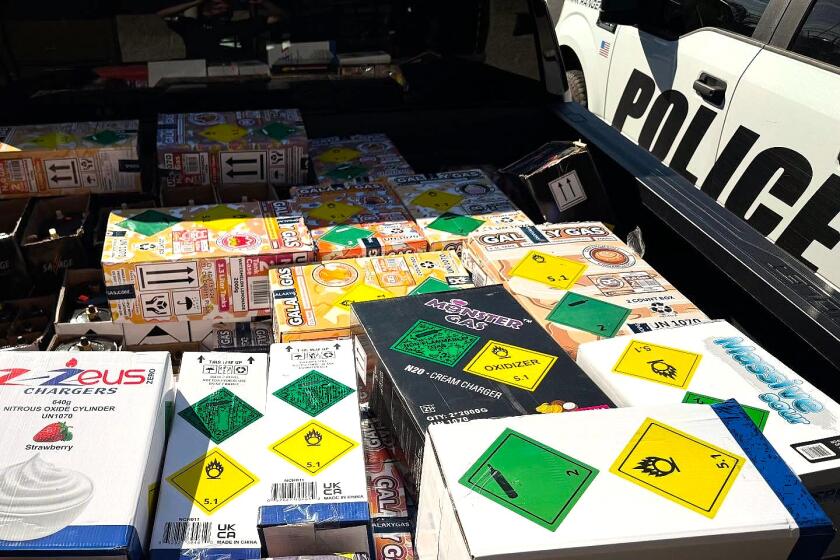A Look Back
- Share via
Jerry Person
“Our church building has a most unique look to it,” Pastor Mark
Lebsack of Hope Chapel Huntington Beach once told me.
He said that it is the premiere example of 1960s style architecture
found in the whole of Orange County. This unique building can be seen at
715 Lake St.
A while back we touched on a bit of the Foursquare movement in
Huntington Beach -- when Aimee McPherson came to Huntington Beach to
dedicate the church building in 1935.
This week, we are going back to the rough and tumble oil boom days of
Huntington Beach when a small group of devoted residents began meeting
inside the old Princess Theatre at 207 Main St. in 1925.
The Foursquare movement had only begun a few years earlier. Huntington
Beach retains the distinction of having a church branch founded by two
ladies who served as its dual pastors.
Twin sisters, Myrtle and Nellie Ryan, served as pastors from 1925 to
1930.
One of the church’s first members, Donna Williams, played in the
theater’s orchestra pit and met her future husband there who also played
in the orchestra.
Williams would continue as a church member for over 60 years.
In 1930 the Rev. Sayers and his wife served as pastors in the early
church. The church received its charter in 1931, during their time there.
The Rev. D. Feldkamp took over leadership of the church in 1932 and
was preparing for the 6:30 p.m. service on March 10, 1933 when at 5 p.m.
the great earthquake struck.
Had the service begun earlier many of the Congregation could have been
injured or even killed.
The members thanked God for keeping them safe, and in a short time
afterward installed a large tent at the corner of Olive Avenue and Main
Street where they held revival meetings.
By October of 1933 O.E. Dunn was running the Full Gospel Mission out
of the Princess Theatre and the church members were meeting at 215 5th
St. with Feldkamp.
But the church members wanted a building of their very own and started
a building fund.
One of their members gave the church three lots on Lake Street to
build a church on.
Construction began in 1935 under the guidance of the Rev.s Birkhart,
Rowe and Wilhite.
The exterior of the new church was completed with help from volunteers
from the church and a paid contractor.
But the interior remained unfinished.
The church’s founder, Sister Aimee Semple McPherson, came down from
Los Angeles on Dec. 23, 1935 and dedicated this new church building.
The Congregation continued saving its money and was able to pay off
the $4,000 mortgage.
During the next four years the church was ministered by the Rev.s
Gentry and Janes.
The interior of the church was then completed with volunteer labor
from the church membership just before World War II.
Throughout World War II the Rev. Evelyn Caudill, with the help of her
assistant Thelma Huey, continued to hold the church together even with
many of the young men of the church serving in the military overseas.
During this time the church had no baptistery or parsonage.
This was remedied during the Rev. Nyenhuis’ time from 1946-51 when he
had a baptistery installed and a parsonage built next to the church in
1949.
Nyenhuis not only found time to do this but also time to visit the
sick and to deliver mail in Huntington Beach.
Nyenhuis, his wife and son Ted lived in a house on Main Streetbefore
moving into the new parsonage.
Next week we will continue looking at the history of the Foursquare
movement in Huntington Beach, its members who fashioned its history from
the start of the Korean War through the new addition added to the
building and on down to the people who are continuing its rich history.
* JERRY PERSON is a local historian and longtime Huntington Beach
resident. If you have ideas for future columns, write him at P.O. Box
7182, Huntington Beach, CA 92615.
All the latest on Orange County from Orange County.
Get our free TimesOC newsletter.
You may occasionally receive promotional content from the Daily Pilot.



